The Chiang Mai Foreign Cemetery
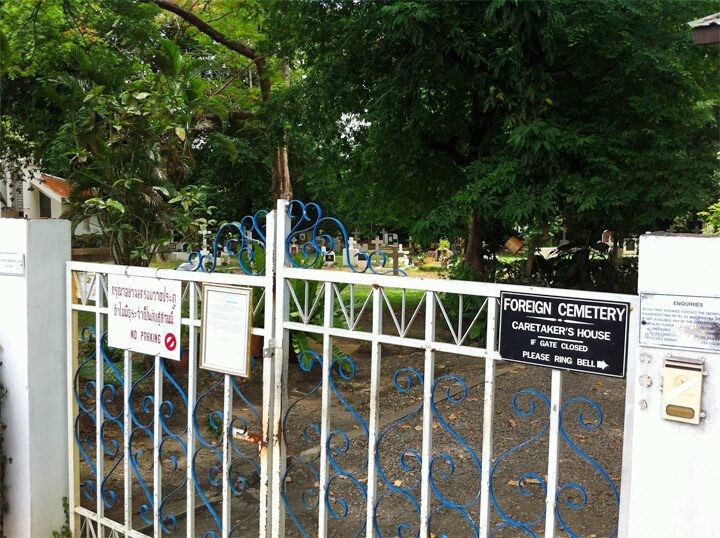
The Chiang Mai Foreign Cemetery (Wikimedia)
In a previous post, I took a moment to think about the historical one protestant cemetery in bangkok. Today I would like to take you to an equally intriguing necropolis in the north, heart Chiang Mai.
This cemetery is located on the old road from Chiang Mai to Lamphun next to the Gymkhana Club. And this is no coincidence because the country on which this farangsports club was established belonged to the same royal gift as the grounds for the cemetery. On July 14, 1898, King Chulalongkorn donated 24 rai of land to establish a cemetery for foreigners. Almost at the same time, he donated another 90 rai to build sports fields. As was the case in Bangkok, the management of the cemetery was entrusted to the British consul. As is the case in Bangkok, current management is carried out by an internationally constituted committee under British official supervision.
The Western presence in the former kingdom of Lanna is in fact a fairly recent phenomenon. American Protestant missionary McGilvary was one of the first to settle in Chiang Mai in 1867. In 1884, the British opened a consulate there with a view to opening up the teak trade in the region. Many of these pioneers were given a final resting place on this site.
The cemetery itself had an eventful history. Land disputes almost literally had to be fought with Thai people who came to live there illegally and the cemetery was vandalized during World War II by Thai soldiers who were billeted in the requisitioned buildings of the adjacent Gymkhana Club. For some reason some of the men of this garrison were convinced that gold had been buried in the cemetery. When the expatriate community returned after the Japanese capitulation, they were dismayed to find a desecrated graveyard with toppled and destroyed headstones. The Thai government was forced by the Allies to restore the site.
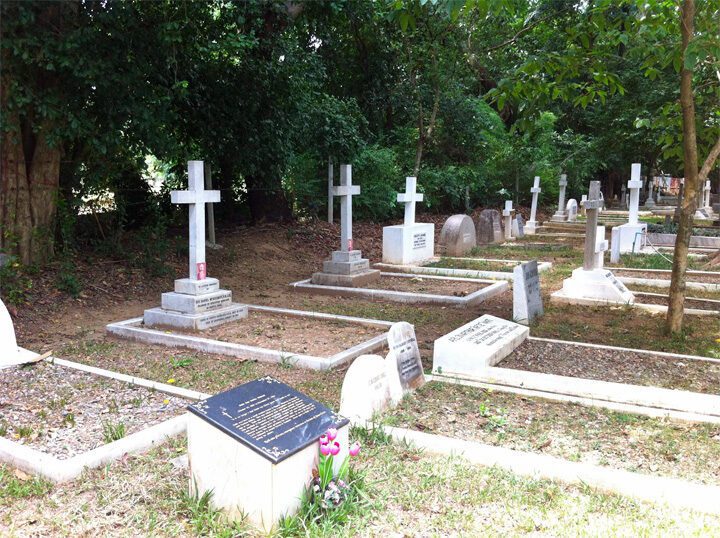
The Chiang Mai Foreign Cemetery (Wikimedia)
The first farang which is described so beautifully on this site was ordered to earth', was British Major Edward Lainson. Guilding. When he died of dysentery on Valentine's Day in 1900 at the age of 45, he had had a colorful life. Guilding, a young staff officer under Lord Kitchener, had campaigned in the Sudan and Egypt, had done garrison duty in India, and had been an interpreter at the Tsar's court in St. Petersburg. He had arrived in Chiang Mai alone, sick and exhausted on an equally weary horse from western China in the last week of January 1900, and succumbed before anyone could figure out exactly how and why he had ended up in northern Siam. It was quite possible that he was commissioned by it Foreign Office spying in the slowly disintegrating Chinese empire or whether he should find out to what extent the Russians were trying to expand their influence in the region.
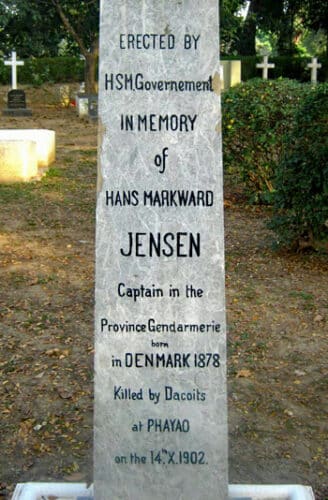
Hans Markward Jensen
Another officer rests under a striking bluestone obelisk. In the summer of 1902, the Danish captain Hans Markward Jensen, together with the teak trader Louis Leonowens (son of Ana Leonowens), led a provincial gendarmerie detachment that hunted Burmese rebels who had assassinated the governor of Phrae in June. They managed to defeat these rebels at Lampang and Jensen was shot dead on October 14, 1902, during the pursuit of the fled insurgents near Phayao. An appreciative King Chulalongkorn paid for his grave monument and had Jensen's mother paid a monthly amount of 1936 Baht until her death in 3.000.
Jensen was by no means the only victim of violence at this necropolis. At least four victims of robbery murders are buried on this site. Evan Patrick Miller, 33, was active in the teak trade and StationManager of Bombay Burma Trading Corporation. He was killed in the jungle in 1910 while eating in his tent. Evelyn Guy Stuart Hartley also worked in the teak trade. These pointed out Squadron Leader of Royal Air Force was shot dead by thieves at his home in Sawankhalok in 1956. Lillian Hamer had been a missionary in Asia since 1944. First in South China with the China Inland Mission and then with the Lisu tribe of Northern Thailand. She was murdered by strangers in Mae Pahm's jungle in 1959. Keith Holmes Tate, 65, was a Freeman of the City of London. He was gunned down in front of a supermarket in the heart of Chiang Mai in 1998.
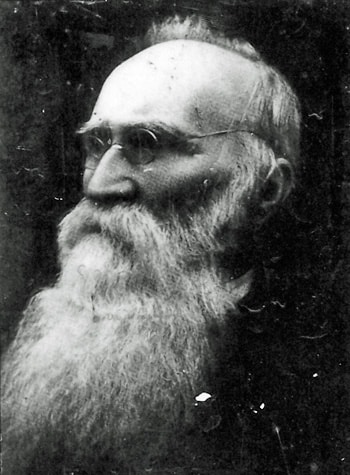
Daniel McGilvary
A much less violent end was reserved for the aforementioned missionary Daniel McGilvary, although his existence in Siam, especially in the early years, was quite turbulent to say the least. His first attempts at Christianization in the North met with opposition from the local ruler Chao Kawilarot, who had two of his first six converts executed. Despite the threats, McGilvary and his wife Sphia Royce Bradley persevered and not only founded several mission posts in the Shan areas and the Chinese Yunnan province, but also a number of schools, including the Dara Academy in Chiang Mai and Chiang Rai Witthayakhom School.
In a corner of this site, the British Queen Victoria watches over this necropolis with a stern look. This bronze statue, cast and commissioned in England, originally stood in the garden of the British consulate on Charoen Prathet Road, on the banks of the Ping, from December 1903. When the consulate had to close its doors in 1978 due to budget cuts, Victoria moved to its current location. A bizarre detail is that for decades this statue was worshiped by the Thais as a kind of fertility goddess with flowers, candles and incense, once they knew how many children Victoria had given birth to in her fertile life.
One of Victoria's loyal servants was William Alfred Rae Wood, CIE, CMG. He was not quite 19 years old when he was appointed by the Queen in July 1896 as consular interpreter in Bangkok. Between the ages of six and twelve he had attended a boarding school in Brussels to learn French. He was immediately assigned a wide range of tasks, as he would write decades later in his memoirs: 'at the age of eighteen I found myself dealing with rugged sailors from the sailing ships, drunken guests at the Ambassador's garden party and starting a racing stable with one pony'….It was the beginning of a long career in the diplomatic service that culminated in his appointment as Consul General in Chiang Mai in 1921. Wood retired in 1931, but in the following years made a service as an English teacher. This former diplomat survived his internment by the Japanese during World War II and died two days before his 92th birthday in 1970 in his beloved Chiang Mai. WAR Wood was the author of the often very funny and strongly autobiographical 'Consul in Paradise: Sixty-Nine Years in Siam' and already in 1926 had one of the first English-language reference works about Siam, his A History of Siam published. His epitaph read simply and perhaps quite truthfully 'He loved Thailand'
Remarkable is the presence of a Dutch former Roman priest on this outspoken Protestant site. Although, when he was still a priest of the diocese of Groningen-Leeuwarden, Leo Alting von Geusaua was a staunch supporter of ecumenism and dialogue within the church. After breaking with Rome, he became an anthropologist and professor in the United States. In 1977 he settled with the Akha and began to study them and defend their interests wherever he could. The founder of it Mountain People's Culture and Development Project died in Chiang Rai in 2002.
The tombstone with the bilingual Thai-English inscription 'In memory of Clifford Johnson April, 17;1912 – November, 2, 1970 The Foreigner Who Loved us'. However, Clifford Johnson was not buried here. He had been a missionary in Thailand for over 30 years Asian Inland Mission and not only in Chaing Mai had one with his own hands Student Hostel for Tribal Children from the ground up, but also the local drug trade regularly put a big path in the basket. This won him not only friends but also quite a few enemies. Shortly after his retirement in 1970, he became Palm Gardens Retirement Community murdered in Ashmore, Southern California at the behest of Thai-Burmese drug lords. About his intriguing life appeared in 2009 'The Secret Retiree: Drugs and Death' by Rupert Nelson.
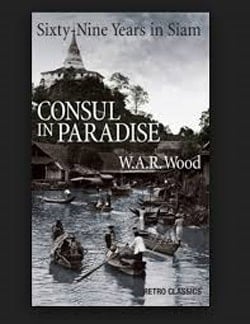
RW Wood was the author of De Mortuis: The Story of the Chiang Mai Foreign Century, a paperback that is sold to this day in favor of the maintenance of this unique site in more than one way.


A beautiful and exciting tour of that cemetery, Lung Jan, for which many thanks. That way I learn more. I want a cremation, but maybe a funeral with a nice tombstone, name, years and sayings is not so bad after all.
Cycled past many times. I thought it might be a Catholic churchyard. So I learned something again. There is another cemetery in changmai I just don't know the name of that road. There is a sports field next to it and it is towards the hotel of that sheikh from the middle east. When I'm back in changmai I'm going to have a look. z Those old cemeteries are interesting. Also visited several in australia and hungary.
The crosses indicate that it is a Protestant cemetery. There is no crucified Jesus on any cross. Protestants don't do this, Catholics often do.
Dear All,
Is there also information about a Protestant cemetery in Chiang Rai?
Because of my faith, I do not want to cremate myself after death, but to be buried.
Thanks in advance for information regarding a cemetery in Chiang Rai.
With thanks,
Jan
I do see a Christian cemetery here in Chiang Rai, on the southwest edge of the city, and I also regularly come across it when cycling through the province. I'm not interested in it myself, but I understand that you have to be registered with certain churches in order to be buried there.
Even in our municipality of Pasang there is a Christian cemetery, in the village or town of Ban Seng.
Is poorly maintained.
Jan Beute.